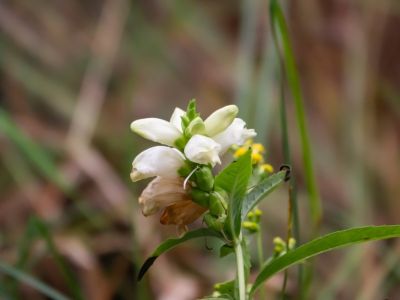So what is turtlehead? A member of the Figwort family, this interesting perennial wildflower is found in many parts of the eastern United States along stream banks, rivers, lakes, and damp ground. Turtlehead flowers are hardy, require minimal maintenance, and provide lots of late season color to the landscape.
Turtlehead Garden Care
With a mature height of 2 to 3 feet (61-91 cm.), a spread of 1 foot (31 cm.) and pretty whitish pink flowers, the turtlehead plant is sure to be a conversation piece in any garden. If you have a moist place in your landscape, these flowers will be right at home, although they are hardy enough to grow in dry soil as well. In addition to moist soil, growing turtlehead Chelone also requires a soil pH that is neutral and either full sun or part shade. Turtlehead flowers can be started from seeds indoors, by directly sowing in a boggy location, or with young plants or divisions.
Additional Turtlehead Plant Information
Although turtlehead flowers are great for natural landscapes, they are also very pretty in a vase as part of a cut flower bouquet. The pretty buds will last about a week in a container. Many gardeners like growing turtlehead Chelone around the perimeter of their vegetable gardens, as deer are not interested in them. Their late summer blooms provide plenty of delicious nectar for butterflies and hummingbirds, making them a favorite of nature lovers. Turtlehead plants divide easily and enjoy a deep layer of organic mulch. Turtleheads also do best in USDA planting zones 4 through 7. They are not suited for desert-like conditions and will not survive in the southwestern United States.
